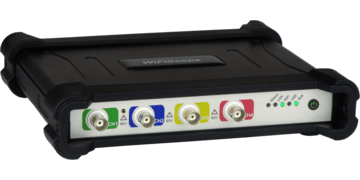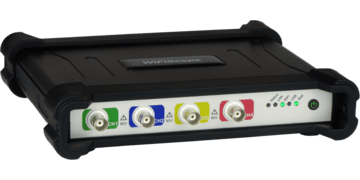WiFiScope, the solution for your measurement challenges
WiFiScope advantages
- Wireless measurements using WiFi and built-in battery with UPS functionality (uninterruptable power supply)
- Mobile measurements are possible, e.g. on transport systems or moving installations
- Network and internet measurements are available for long distance measurements
- Continuous live streaming measurements over WiFi, network, internet and USB
- Galvanic isolated measurements, no physical connection to the PC required
- Differential or single-ended inputs
- USB measurements for stand-alone applications and real time high speed transient recording up to 200 MSa/s
- Easy WiFi setup, connect to an existing WiFi network in a few clicks
- Auto discovery, no need to enter IP addresses
- SDK with many examples for easily integrating the WiFiScope in other applications

Robust industrial design
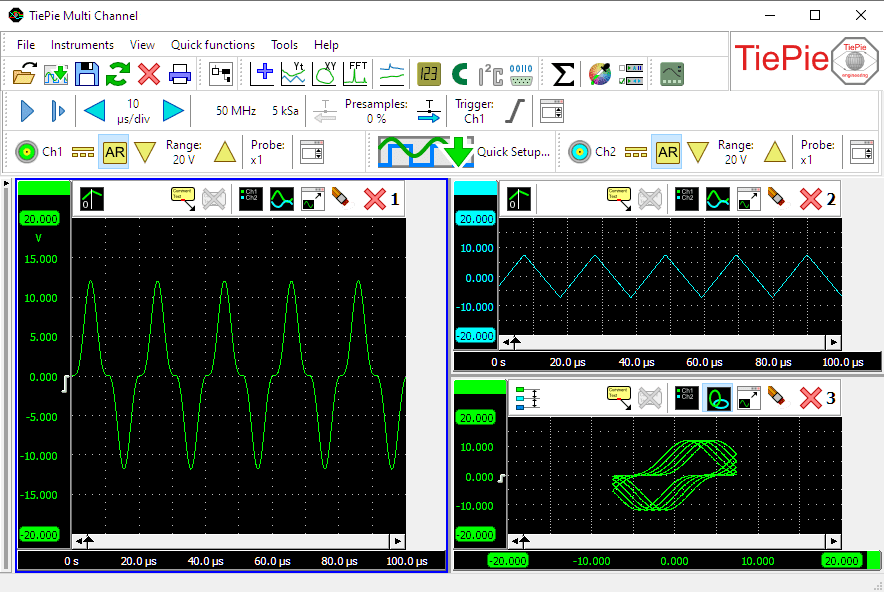
WiFiScope software
Using the powerful Multi Channel oscilloscope software the WiFiScope can be used as oscilloscope, spectrum analyzer, data logger, multimeter, Arbitrary Waveform Generator and protocol analyzer. The software includes more than 700 quick setups that configure the WiFiScope in a single click to perform the measurement. The Quick Setups are carefully organized in a tree structure, ordered by application. Just a few mouse clicks allow to perform a complex measurement.
WiFiScope connectivity
- Connect direct to PC/Laptop using USB 3.0
- Connect to local WiFi network
- Connect via local network
- Stand alone WiFi network for field operation
- Connect via internet to a remote location
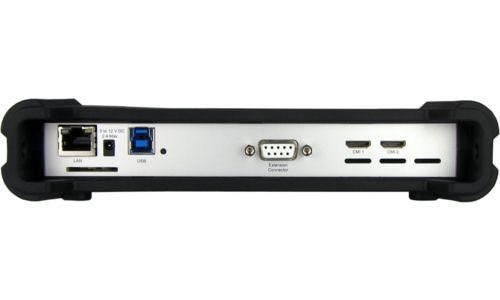
WiFiScope battery
Using the built-in battery the WiFiScope can measure for hours without external power supply. When measuring on battery power and connected though WiFi, you have the best galvanic isolation. Also the battery has a UPS functionality to continue measuring at power loss.
WiFiScope key specs
- 2 or 4 channels
- Differential or single-ended inputs
- Up to 1 GSa/s sampling
- Up to 200 MSa/s streaming
- Up to 256 Mpts data buffer
- 250 MHz bandwidth
- Low noise / High resolution
- High accuracy
- Arbitrary Waveform Generator
Available WiFiScopes
WiFiScope WS5
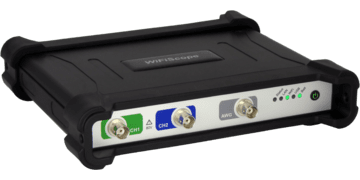
2 Single-ended Channels
up to 500 MSa/s sampling
Signal Generator output
Base price: € 1,917.00
Single-ended inputs
Standard single-ended oscilloscope inputs measure the input voltage referenced to the ground level. The grounds of all inputs are connected to each other and to the ground of the scope.
Differential inputs
Differential oscilloscope inputs measure the input voltage between the two sides of the input, not referenced to ground. The inputs do not have a common ground connection.

